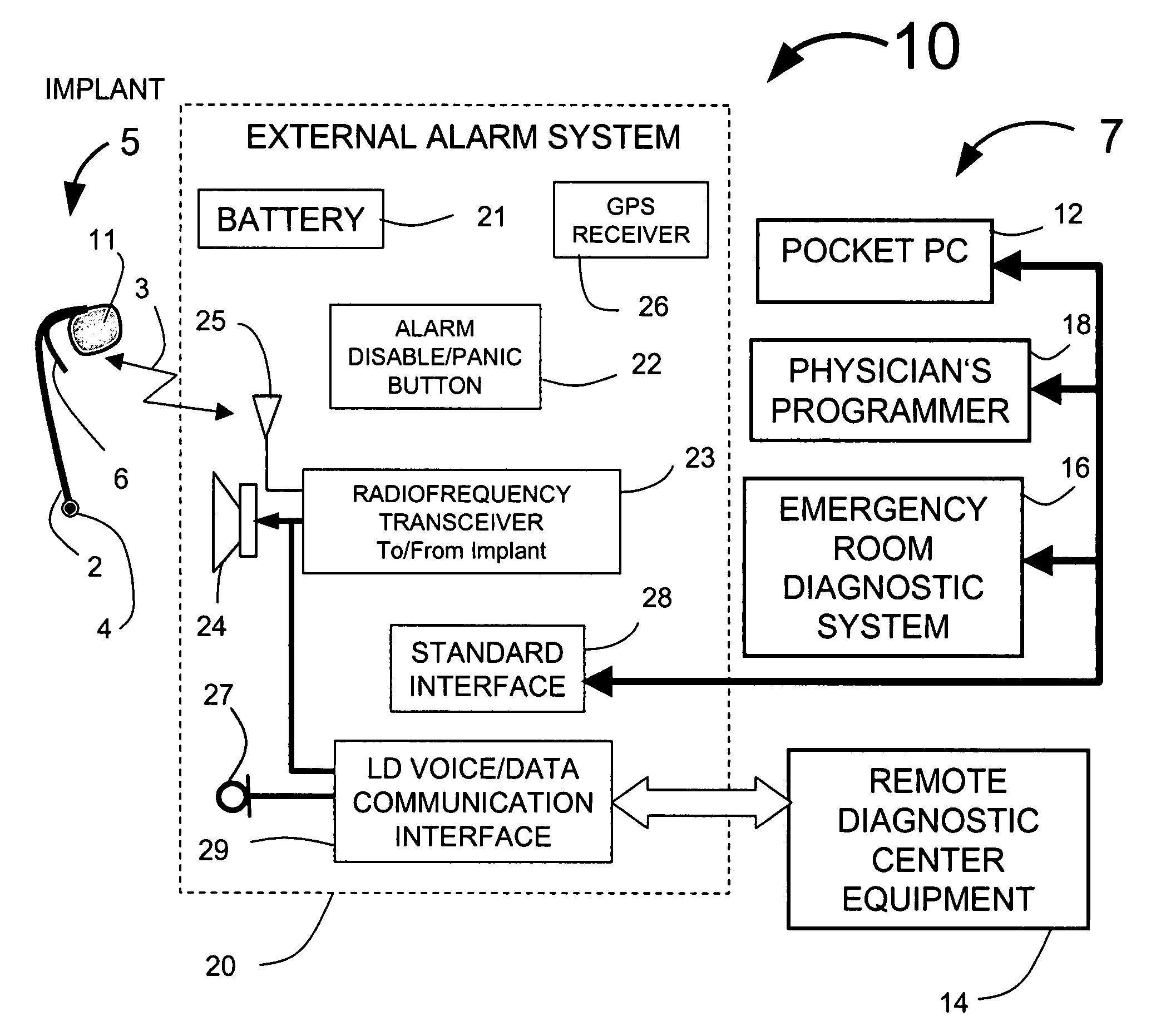System for patient alerting associated with a cardiac event
a cardiac event and patient technology, applied in the field of implantable medical device systems, can solve the problems of unreliable detection of cardiac events from a standard 12 lead ecg, ami is a common and life-threatening complication, and the risk of ami is higher in coronary atherosclerosis, so as to achieve the effect of increasing frequency and increasing amplitude over tim
- Summary
- Abstract
- Description
- Claims
- Application Information
AI Technical Summary
Benefits of technology
Problems solved by technology
Method used
Image
Examples
Embodiment Construction
[0050]FIG. 1 illustrates one embodiment of the Guardian system 10 consisting of an implanted cardiosaver system 5 and external equipment 7. The cardiosaver system 5 includes a cardiosaver 11, an antenna 6 and an electrode 4 that is part of a lead 2. The cardiosaver 11 includes electronic circuitry that can detect a cardiac event such as an acute myocardial infarction or arrhythmia and can warn the patient when a cardiac event occurs. The cardiosaver 11 can store the patient's electrogram for later readout and can send and receive wireless signals 3 to and from the external equipment 7 via the implanted antenna 6 and the external antenna 25. The functioning of the cardiosaver system 5 will be explained in greater detail with the assistance of FIG. 2.
[0051]The cardiosaver system 5 has at least one lead 2 with at least one electrode 4. In fact, the cardiosaver system 5 could utilize as few as one lead or as many as three and each lead could have as few as one electrode or as many as ei...
PUM
 Login to View More
Login to View More Abstract
Description
Claims
Application Information
 Login to View More
Login to View More - R&D
- Intellectual Property
- Life Sciences
- Materials
- Tech Scout
- Unparalleled Data Quality
- Higher Quality Content
- 60% Fewer Hallucinations
Browse by: Latest US Patents, China's latest patents, Technical Efficacy Thesaurus, Application Domain, Technology Topic, Popular Technical Reports.
© 2025 PatSnap. All rights reserved.Legal|Privacy policy|Modern Slavery Act Transparency Statement|Sitemap|About US| Contact US: help@patsnap.com



